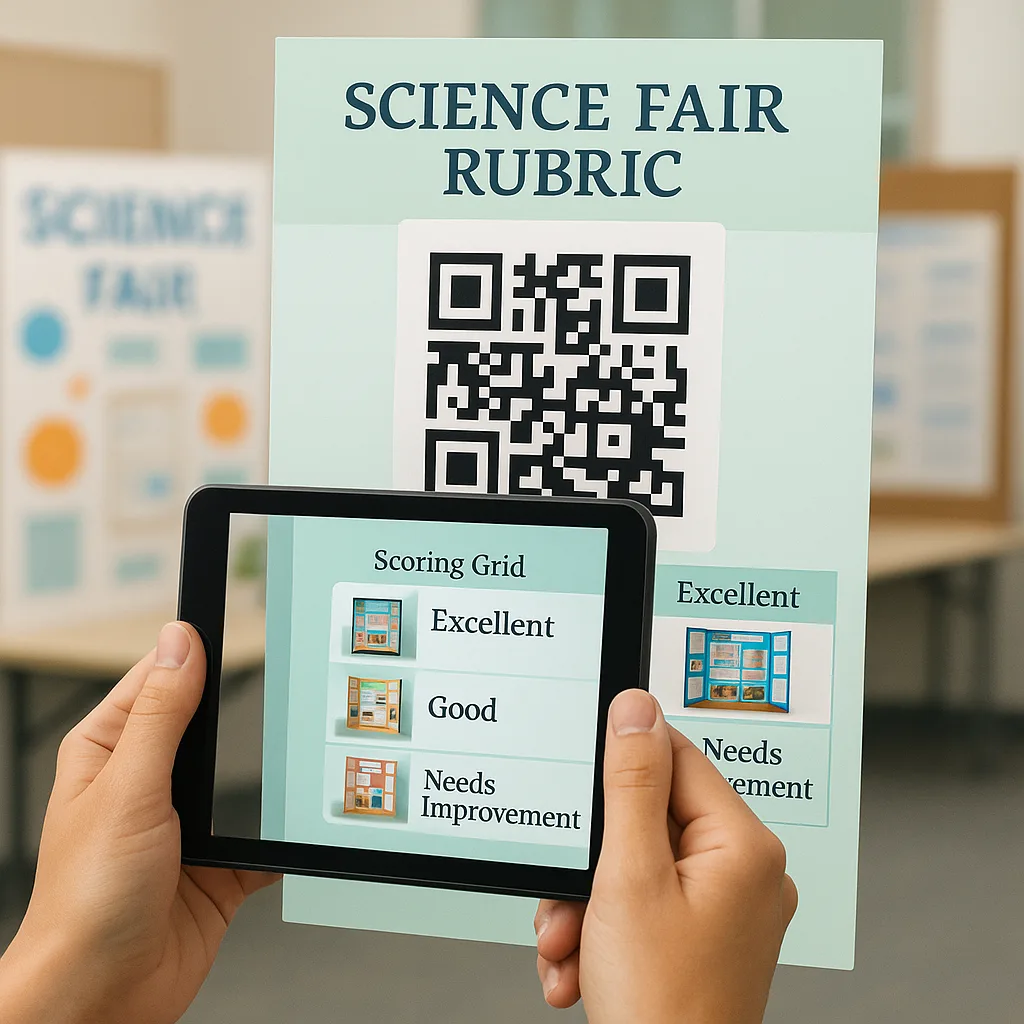Poster Maker for Schools Science Fair Rubrics
Why Visual Rubrics Matter for Science Fair Success
As an educational psychologist who’s worked with countless teachers experiencing science fair stress, I’ve seen firsthand how unclear expectations create anxiety for everyone involved. Students worry about meeting criteria they don’t fully understand, judges feel pressure to evaluate fairly, and teachers become overwhelmed coordinating it all. This is where visual rubrics created with a quality poster printer become powerful wellness tools.
Research from the American Psychological Association shows that visual information processing reduces cognitive load by up to 40%. When we translate abstract grading criteria into clear, visual formats, we’re not just making assessment easier—we’re actively reducing stress and supporting mental health throughout the science fair process.
The Psychology Behind Visual Assessment Tools
Visual rubrics tap into multiple psychological principles that promote calm and clarity. First, they provide what psychologists call “cognitive scaffolding”—external supports that help our brains process complex information more efficiently. Instead of holding abstract criteria in working memory, students can reference concrete visual guides that show exactly what success looks like.
Additionally, transparency in assessment reduces what we call “evaluation anxiety.” When students can see the exact criteria judges will use, displayed clearly on large-format posters throughout the science fair venue, the mystery disappears. This transparency builds trust and allows students to focus on showcasing their learning rather than worrying about hidden expectations.
Creating Your Poster Maker for Schools Science Fair Rubric System
Step 1: Design with Clarity and Calm
Start by choosing calming colors that promote focus without overwhelming. Research suggests that soft greens and blues reduce cortisol levels while maintaining attention. Use your school’s poster maker to create rubrics with these soothing color palettes, incorporating plenty of white space to prevent visual overwhelm.
Structure your rubric with clear sections for each criterion: Scientific Method, Creativity, Presentation, and Research Quality. Use icons or simple graphics to represent each category—a microscope for scientific method, a lightbulb for creativity, and so on. These visual anchors help both students and judges quickly navigate the rubric without stress.
Step 2: Integrate Technology Mindfully
QR codes can bridge the physical and digital worlds without adding complexity. Place QR codes on your printed rubrics that link to example projects, video explanations of criteria, or digital submission forms. This integration should feel seamless, not stressful. The best printer for posters will produce crisp, easily scannable QR codes that work reliably.

Implementing Interactive Elements for Engagement
Making Criteria Crystal Clear Through Design
The key to reducing science fair anxiety lies in eliminating ambiguity. When designing your rubrics with a poster maker for schools science fair preparation, consider using progressive visual examples. For instance, instead of just listing “Excellent,” “Good,” and “Needs Improvement,” include actual photos or diagrams showing what each level looks like.
Create a visual progression for each criterion. If you’re evaluating display boards, show photos of actual boards at each scoring level. For experimental design, use flowcharts that illustrate the completeness expected at each tier. This concrete visualization removes the guesswork that creates stress for students and ensures consistency among judges.
Strategic Placement for Maximum Calm
Where you place these visual rubrics matters as much as their design. Position large-format rubric posters at the science fair entrance, allowing students and parents to review expectations upon arrival. This immediate visibility reduces anticipatory anxiety. Place smaller versions near judging stations as gentle reminders that keep everyone aligned.
Consider creating “rubric stations” where students can do self-assessments before judging begins. Using a quality poster printer, you can produce durable, reusable rubrics that students can interact with using dry-erase markers. This hands-on engagement transforms nervous energy into productive self-reflection.
Supporting Judge Wellness Through Clear Systems
Remember that judges—often parent volunteers or community members—experience their own stress during science fairs. Clear visual rubrics created with the best printer for posters support their well-being too.
Judge Training Materials
Create poster-sized training materials that judges can review together before the fair begins. Include scoring scenarios and practice exercises that build confidence. When judges feel prepared and supported, they make more consistent, fair assessments—reducing stress for everyone involved.
Quick Reference Guides
Design smaller, laminated quick-reference cards that judges can carry. These should include scoring shortcuts, common questions to ask students, and reminders about maintaining a supportive atmosphere. The portability of these guides, produced on your school’s poster making equipment, ensures judges always have support at hand.

